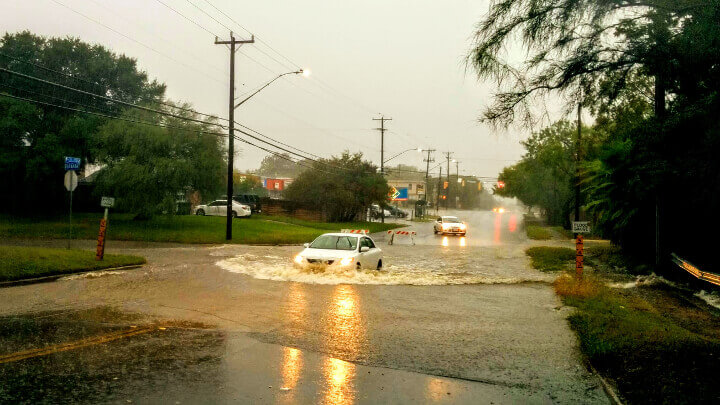
Texas weather can be wild and dangerous, as Hurricane Harvey is showing us this week, so here are some techniques that have helped me track the impact of storms, floods and other natural disasters in San Antonio and other parts of the state:
Weather forecasts and warnings
The National Weather Service provides so much useful information it’s hard to know where to start. For Bexar County, I usually check the service’s detailed “zone” weather page, which provides a snapshot of current conditions, forecasts and hazardous weather warnings.
Zone forecasts are available for all counties — you can find the ID number for your zone in this list of Texas counties. The list includes links to RSS feeds and profiles for each zone. Click on a profile, and you’ll see all current weather watches, warnings or advisories for that particular zone.
I follow my local office of the National Weather Service on Twitter and turn on mobile notifications when the weather turns bad. The forecasters in your area use Twitter to provide a steady stream of updates and weather data.
ICYMI: Here's a short summary of the peak winds & highest observed rain totals from #Harvey.
For a full listing: https://t.co/4vep1s1DY4 pic.twitter.com/omNlaa5C60
— NWS San Antonio (@NWSSanAntonio) August 29, 2017
AccuWeather Platinum is the best smartphone app I’ve found to keep track of the weather. It not only tells you when it’s going to rain in your location, it predicts the intensity and duration. It also offers an interactive Doppler radar map.
Google provides a real-time, interactive map of public alerts for a wide variety of emergencies.
Measuring rainfall
The National Weather Service offers hourly weather observations, including rainfall totals, for the past three days at the San Antonio International Airport, the main site for weather stats in Bexar County.
The weather service also compiles archives of observations and data for the San Antonio area, and it issues public information statements with more rainfall totals, river flooding and other statistics.
Floods and traffic
Bexarflood.org provides an interactive map of low water crossings and their current status. You can sign up for alerts when a crossing closes or opens. The city of San Antonio also posts emergency street closures.
The Advanced Hydrologic Prediction Service offers an interactive map of current and predicted river levels. Each site on the map is color-coded to show where major flooding is expected to occur.
TexasFlood.org, a state website, provides a similar river-level map that lets you add additional layers of data, such as weather advisories and Doppler radar images. You can set up an account and sign up for email or text alerts when specific gages show a river or creek is flooding.
Drive Texas is a map provided by the Texas Department of Transportation that shows current traffic conditions on Texas highways and roads. The map shows any flooded roadways.
Rescues and emergency responses
The San Antonio Fire Department’s “active calls” page shows a list and location of emergencies firefighters are responding to, including high-water rescues.
Broadcastify provides a digital feed of police and firefighter radio traffic at departments across the United States. The scanner traffic is available on its website and through a smartphone app.
The Texas Department of Public Safety provides daily situation reports about any emergency conditions in the state and how officials are responding. The reports cover everything from hurricanes to droughts.
CPS Energy provides a map showing the location of current power outages in its service area and the number of customers without power.
Did I forget anything? Contact me or leave a comment below if I missed any useful resources and I’ll be sure to add them to the list.





